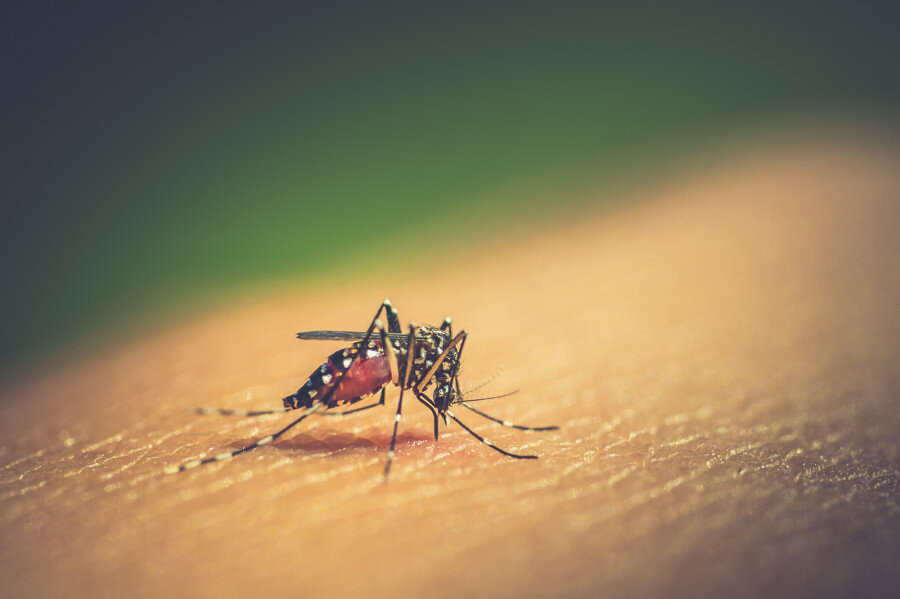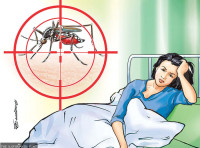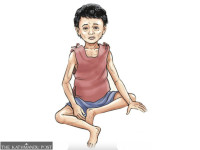Health
Two dead, 11 infected this year as Japanese encephalitis hits 9 districts
Higher mortality risk for those over 15. Mosquito-borne disease riskier for unvaccinated.
Arjun Poudel
At least two people died and 11 others have been infected with the Japanese encephalitis (JE) virus that has spread in nine districts of the country since January.
Of the deceased, one is a 49 years old male from ward 7 of Kanepokhari Rural Municipality in Morang district and another is a 17 years old male from ward 2 of Devtal Rural Municipality in Bara district.
Of the 11 people infected with the deadly disease, four have recovered, and the remaining seven are still receiving treatment.
Japanese encephalitis is a viral brain infection endemic to Asia and parts of the Western Pacific. According to the World Health Organisation, it is a mosquito-borne flavivirus belonging to the same family as dengue, Zika, yellow fever, and West Nile viruses. The virus kills a third of those who fall ill and leaves up to a half of the survivors with severe lifelong disabilities, according to the UN health body.
Last year, 23 people succumbed to the disease, including one in the Kathmandu Valley, and over 80 people were infected.
This year, in addition to Morang and Bara districts, Jhapa, Saptari, Siraha, Sarlahi, Parsa, Nawalparasi West, and Chitwan districts have also reported JE cases.
Officials say the actual number of cases could be much higher, as tests were carried out only on hospitalised patients with severe symptoms.
Data from the Ministry of Health and Population show that only one nine-year-old patient was found inoculated with the JE vaccine. Four infected persons, including one of the deceased, had not received the vaccine, and the vaccination status of the remaining eight patients is unknown.
Five of the infected persons are children. Data shows that the mortality rate among people above 15 years of age is higher compared to those below 15, which indicates that those not receiving JE vaccine are at high risk of infection.
Doctors say complications from JE infection can cause permanent injuries to the brain and the nervous system. The disease has no cure, so treatment focuses on managing symptoms. However, safe and effective vaccines have been developed to prevent infection.
Health officials said their attempts to convince development partners, including the World Health Organisation, to support a mass JE vaccination campaign have not succeeded over the past year.
In 2005, JE killed nearly 2,000 people in Nepal—mostly children from Tarai districts. Nepal started administering the JE vaccine in 2006, eight years before the World Health Organisation officially issued prequalification certification, due to the high rates of infection and deaths from the virus at the time.
In the first phase, all populations of the highly affected four districts—Banke, Bardiya, Dang, and Kailali—reveived the JE vaccine. Later, the vaccination programme was expanded to 19 other affected districts, and children under 15 were inoculated.
The government integrated the JE vaccine into routine immunisation in 2015. Still, people continue to die and dozens get infected by the deadly virus every year.
Public health experts say this is the right time to vaccinate all those at risk. Even if the vaccine does not help in outbreak management, it provides immunity against future infections, according to them.
The JE virus is transmitted to humans through the bite of infected Culex mosquitoes. Pigs and ducks are considered natural reservoirs of the virus.
Doctors advise avoiding mosquito bites, such as by using mosquito repellents, wearing long-sleeved clothes, and getting vaccinated if one lives in or travels to disease-endemic areas. They also stress the importance of awareness and timely treatment to prevent infections and deaths.
An estimated 12.5 million people are thought to be at high risk of JE infection in Nepal.




 13.12°C Kathmandu
13.12°C Kathmandu














